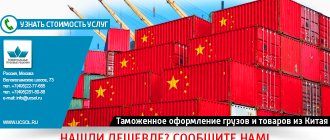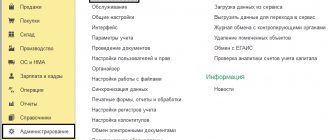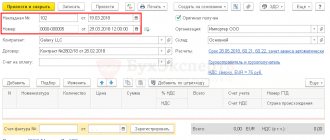Protecting the interests of domestic producers, Russia strictly regulates the import of products from other countries. The legislation clearly defines the products allowed for import and the standards for their transportation for specific producing countries. To pass the customs procedure for import deliveries, a certain package of documentation is required. Before importing goods into the Russian Federation, it is worth consulting with experts in this matter (for example, customs brokers) and studying Russian laws.
Importing to Russia has certain difficulties, since the rules and regulations are quite strict, differing from the provisions of other countries. Documentation must be drawn up strictly in accordance with established requirements, otherwise problems will arise with passing customs, obtaining a certificate and paying for imported products.
List of documents required when importing goods
The complete list of documents for importing goods into Russia depends on various factors: the type of imported cargo; country of origin of the product; type of business activity of the exporter, etc. There are mandatory types of documents for customs clearance of imports, which constitute the main package required for commercial transactions with any state.
Foreign economic contract
The fundamental document that is provided when clearing goods imported into Russia at customs is a contract. The text of the agreement is drawn up in Russian and English, and the main one is indicated, understandable to each of the parties - the sender and the recipient. The same rules regarding language also apply to additional agreements attached to the contract. They indicate detailed information about the product, its production time, price, full cost of the batch and payment terms. This measure is necessary to avoid misunderstandings and controversial issues due to possible discrepancies in the provisions of the document.
The text of the foreign trade agreement must contain the following information:
- subject of the contract: full name of the cargo and its type;
- the price of imported products and the total value of the contract;
- conditions and terms of cargo delivery in accordance with INCOTERMS 2010;
- number of product units;
- quality characteristics of products;
- conditions for transfer and acceptance of imported goods;
- information about the packaging, appearance and marking of the transported cargo;
- the degree of responsibility of the importer and the recipient;
- circumstances that relate to force majeure;
- provisions on the responsibility of each party for fulfilling the terms of the contract;
- duration of the contract;
- legal addresses of foreign trade participants, their bank details.
A contract is the main document on the basis of which a transaction is concluded. Failure to draw it up correctly may cause the agreement to be invalidated. Before submitting a document, you need to check whether it corresponds to the official form and whether all information is correct. Based on the foreign trade contract, a transaction passport is issued.
Transaction passport
Each operation to import goods must be documented - a transaction passport. This paper is drawn up at the bank through which the money is transferred. The transaction passport contains information about the participants in the transaction, the financial institution and the transaction agreement in the following format:
- details of the counterparty from Russia (official name, legal address of the company, TIN, date of registration of the organization, KPP, OGRN, bank account number through which the transaction is paid);
- details of the foreign supplier - the information is exactly the same;
- details of the financial institution servicing the foreign trade transaction, where the transaction passport is issued;
- information about the contract: registration number, date of its preparation, total amount of the contract, currency of payment, expiration date of obligations under the contract, special conditions specified in it).
On March 1, 2021, new rules for the control of foreign exchange transactions came into force (Instruction of the Bank of Russia dated August 30, 2017 N 4512-U), according to which it is no longer necessary to issue a transaction passport when concluding foreign trade contracts.
Invoice
An invoice is a type of mandatory payment document for the passage of imported goods through the customs procedure. It is drawn up on the official letterhead of the manufacturer of the goods, certified by the seal of the organization and the signatures of those responsible for the supply. The document must meet the requirements for payment and settlement documentation and have all the necessary identification features. The invoice is attached to other financial documents accompanying the cargo and contains complete information about the goods, as well as other information:
- type of settlement document: Commercial / Proforma;
- number, date of discharge;
- information about the parties to the transaction, the cargo carrier: names of organizations, their legal addresses;
- date of signing a foreign trade contract, numbering of the document;
- delivery terms according to INCOTERMS 2010;
- for each type of imported product - a separate line describing its characteristics, quantity, weight and cost;
- weight of the entire cargo and total cost in $;
- purpose of transporting goods.
Read more about what an invoice is here.
The invoice is drawn up in Russian and English; it is required only for foreign economic transactions.
Participants in foreign trade activities prepare and submit an invoice to the customs authority independently. For registration, use the information specified in the contract and passport. Any discrepancy between the invoice and contract information will cause problems with cargo clearance at customs.
Packing list
This type of document contains information about the quantity, volume, weight of the goods being transported. The contents of the packing list include the following information:
- invoice number with the date of its preparation;
- contract number with the date of its execution;
- information about the seller, buyer, recipient of the goods: official names, legal details of companies;
- data on each piece of cargo: name of product, type of packaging, quantity in the package, number of all packages, dimensions, net/gross weight;
- total number of pieces and volume of all cargo;
- total weight of the goods (net/gross).
The paper is drawn up in two languages – Russian and English – and certified by the seal and signature of the responsible employee.
Any documents for import of goods
Get a free design consultation
Call us on our toll-free number, or fill out the form and we will promptly contact you!
8 800 700 0952 Feedback
Bill of lading
A bill of lading is drawn up if sea transport is used to transport the goods. This document is issued by the cargo carrier to the sender as evidence of the transfer of cargo and the latter’s obligation to deliver the goods to their destination and deliver them to the other party to the contract - the recipient. The bill of lading contains the following information:
- name of the vessel carrying out the delivery;
- information about the transporter (official name, legal address);
- the name of the port of loading and the date when the goods were accepted;
- sender details;
- port of unloading of goods;
- recipient data, if specified by the sender;
- quantitative and qualitative indicators: weight of cargo, number of places, items or other quantitative characteristics;
- description of the appearance - markings and method of packaging of the cargo;
- the cost of freight paid by the recipient (or an indication that he is obliged to pay for transportation);
- date and exact time of signing the document;
- signature of the person responsible for the transportation (captain or his authorized representative).
According to the agreement of the parties, other information and conditions may be entered into the document. The bill of lading is usually drawn up in three copies: for the seller, the carrier of the goods and the recipient. All three papers are considered originals and are marked with the appropriate stamp. Copies are issued on forms of a different color and are also marked with a stamp saying “Copy.”
The goods are transferred to the recipient only according to the original bill of lading. If one copy of the product is issued, the rest are considered invalid.
Railway invoice
The railway consignment note regulates the relationship between the participants in a foreign trade transaction - the sender of the cargo, the carrier and the recipient of the goods transported by rail. The invoice indicates the conclusion of an agreement for the carriage of imported goods and the fulfillment of this agreement. This document is with the cargo along its route and is issued along with the arrived goods to the recipient at the destination. The railway waybill states:
- points of dispatch and receipt of cargo;
- seller details;
- recipient details;
- information about the product: name, number of occupied places, weight;
- time of receipt of goods for further transportation;
- date of delivery to final destination.
You should carefully check that the official name and legal address of the recipient of the cargo are filled out correctly. Otherwise, receiving the goods will be fraught with big problems.
Certificate of origin
This document confirms that the product was manufactured in a certain country. Certificates of origin of goods, depending on the country of origin of the imported product, can be of three types.
- Form ST-1.
Issued if the manufacturer of the product belongs to the CIS countries. Products from these countries are not subject to import taxes and VAT. - Form A.
Certificates of this type are presented in the USA, Canada, EU countries, Turkey and some other countries that are subject to a preferential tax rate of 25%. - General form.
Such certificates are issued for all exported goods, unless the importing state requires the provision of other certificates of origin of products.
Please help make this article better. Answer just 3 questions.
Note!
The certificate of origin is not a mandatory document when importing into the Russian Federation; it does not need to be submitted to customs. However, if the exporting country is included in the list of “beneficiaries”, transporting the goods to the foreign trade participant who submitted the certificate will cost less. Otherwise, no benefits are provided, and the customs clearance procedure takes place in the standard manner.
Tobacco products and alcohol
There are certain prohibitions in the Russian Federation on the import of tobacco products and alcoholic beverages. If you do not intend to pay the appropriate government fees and enter these goods into the customs declaration, you will only be able to transport alcohol and tobacco in accordance with certain limits. They apply only to citizens of the Russian Federation who are over 18 years of age.
Each tourist has the right to carry only three liters of products containing alcohol. It doesn’t matter what kind of drink it is or what percentage of alcohol it contains. That is, it can be either absinthe or beer, the standards for them are the same. This is how much alcohol you can import into Russia. Note that the food embargo has not yet affected alcohol. So if you are concerned about how much wine you can import into Russia, then know that it must fall under the general requirements - no more than three liters per person.
Special rules apply to the import of tobacco products. You can have with you 200 cigarettes, 50 cigars, 100 cigarillos, and no more than 250 g of pure tobacco. Here's how many cigarettes you can import into Russia.
Please note that in addition the tourist is allowed to bring in two more liters of alcohol, which will need to be included in the declaration, paying 10 euros for each liter. If we are talking about tobacco, then in this case the rule of mutual exclusion applies, that is, you will have to choose only one type of product.
What additional documents may be required?
The list of documents indicated above is fundamental. However, most often the required package is not limited to this list. What other documents may be required to organize import to Russia?
Preparation of documents for import of goods
Get a free consultation
Call us or fill out the feedback form and we will contact you as soon as possible.
8 800 700 0952 Feedback
General and financial documentation
- Statutory documents of a product exporting company, reflecting the structure, area of activity, and features of the enterprise.
- Waybills: depending on the type of transport used to transport the goods, air or road or other types of waybills may be required.
- Documentation confirming receipt of the services of brokers, declarants and other specialists, if they occurred during the transaction.
- Invoices for cargo transportation (if the delivery terms are EXW, FCA, FOB, FAS, a breakdown of the cost of transportation before and after the border with Russia is required).
- Customs declarations of the state from which the goods are transported.
- Cargo insurance certificates.
- Documents confirming payment for the goods by the recipient (in the case where the contract specifies prepayment).
- Payment orders and receipts (payment of customs duties and taxes, VAT, special duties).
- Receipt from the temporary storage warehouse of goods.
- Copyright agreement or license.
- Calculation of unit cost of goods.
- Agreements with all parties involved in the transaction.
- For currency control, in addition to the transaction passport, a goods declaration is provided.
This documentation may be supplemented depending on the specific import conditions and the type of goods transported. Or maybe, on the contrary, many of the listed papers will not be needed: it is advisable to find out all the conditions and the list of required papers when planning to enter into a contract. And for this it is better to contact an experienced specialized specialist - a customs broker.
In addition, there are categories of goods that require additional certification. This is a type of permit that confirms the safety and legality of imported products.
Certificates and permits for the import of goods
The need to provide appropriate permits from other, non-customs authorities is determined after studying the type of imported goods. Some types of products must have certificates or a license due to the special conditions of their origin, use and HS code. For different categories of cargo, the type of additional documentation is determined.
- Phytosanitary certificate
(imported). A type of international document issued by quarantine control authorities for products of plant origin - vegetables, fruits, cereals, and other plants. Each batch of goods must undergo quarantine certification. - Veterinary certificate
(imported). An international document, which is issued after a sanitary inspection for the import of animals, feed for them and products of animal origin - meat, poultry, fish. - CITES permit
- for the import of endangered animals or plants. - Quarantine conclusion
(imported). Provided for certain groups of goods of plant origin: vegetables, fruits, organic fertilizers, soils, flour, animal feed, etc. - SEZ – hygiene certificate.
Indicates the hygienic safety of imported products for humans. The certified group includes consumer goods, building materials, medical equipment, etc. - A license from the Ministry of Industry and Trade
is a document required for the import of fertilizers, precious metals, and timber. - Permission from the internal affairs authorities
- for the transportation of weapons. - Permission from the Ministry of Communications and the FSB
- if radio electronics and high-frequency devices are imported. - Permission from the Ministry of Health
- when importing medicines into the Russian Federation. - Permission from the Federal Drug Control Service
- if drugs containing narcotic drugs are imported across the border. - Alcohol import license
– when importing wine and other alcohol-containing products into the country. - Certificate of state registration
(product certificate) – for the import of cosmetics. For cosmetics whose trademarks are included in the Customs Register of Individual Property - permission from the copyright holder. - Technical passports, booklets, samples
- to confirm the characteristics of specific products.
The list of documentation is not limited to the options provided. To import certain categories of goods, additional documents may be required, which depend on the foreign economic activity product nomenclature code and the relevant regulatory requirements of the customs service for this type of product.
Export from Russia to Lithuania
What are the advantages?
- Delivery to a Russian company
. You do not need to develop an export contract.
- You receive payment in rubles from a Russian company.
You will not need to open transaction passports or reports in connection with the legislation “On Currency Control”.
- You ship on a pick-up basis from your warehouse.
We ourselves will work out the logistics for the client.
- You will not need dual-use certificates or examinations.
All issues of correct registration fall on us.
- You do not need to reimburse the “export” VAT at the tax office and wait 6-7 months for its return.
Features of paperwork for import from China
Many countries, including Russia, actively cooperate with the world's largest exporter of goods - China. Products for import to the Russian Federation - equipment, electronics, household goods. The huge distances that cargo has to travel are not a problem if the logistics are organized correctly. You can learn more about the certification of goods from China in this article.
Customs clearance of goods is carried out at the points of arrival. During customs clearance, in addition to the standard package of documents, the authorities must submit the following papers:
- licenses and certificates from government agencies for types of goods for which this is provided for by Russian legislation;
- exact name of the product, photographs of products and packaging;
- certificate of conformity form A;
- transportation agreement marked “Before the Russian Federation” and “After the Russian Federation”;
- Swift confirmation of payment for cargo;
- a document confirming the value of the cargo;
- customs declaration.
The established list of documents may vary depending on the requirements of various customs posts, which it is advisable to clarify in advance. The “clearance” procedure will begin after submitting the necessary documents and a cargo customs declaration. When importing cargo up to 50 kg, customs duty is not charged.
Prohibited Products
After the introduction of counter-sanctions, the import of products into Russia from the countries of the European Union was significantly complicated. It is worth noting that food sanctions did not affect goods imported for personal use.
Therefore, all products from the sanctions list do not affect the rules for individuals in any way. If you are wondering whether it is possible to import cheese to Russia, then you can do so without any worries. The main thing is to comply with the general rules - not to exceed the weight of food at the rate of 5 kg for each passenger.
The same applies to many meat delicacies, which after the introduction of sanctions became simply impossible to buy in stores. Prosciutto, jamon, fish, honey, sausage - this is not a complete list of what can be imported into Russia from the European Union, if all this is for your personal use and not for sale. The main thing is that they are all in the original packaging. For example, if we are talking about cheese, then it should be in vacuum packaging from the supermarket, which is not damaged. If it's farmer's market cheese wrapped in paper, you'll have problems. Most likely it will be confiscated.
In general, all products should be only in the form in which they were originally released by the factory. For example, if the same jamon was cut for you in a store, wrapped in its own vacuum packaging, the customs officers will have complaints.
This is how many products can be imported into Russia. But if we are talking about dairy and meat products, then you can officially even exceed the norm of 5 kg. But we warn you right away that this will not be easy. To do this, you need to obtain official permission from Rosselkhoznadzor. To do this, you first have to register in the Argus system. This is an automated reference system that is designed to consider applications for the import, export or transit of animals, plants and all kinds of products of plant and animal origin.
Through this system, you will be able to obtain a permit online, but, in addition to it, you will also need a veterinary certificate, which must be signed by a representative of a foreign agency from the state where you make the purchase. For example, if you plan to import more than 5 kg of fruits or vegetables, you will need a phytosanitary certificate from the country in which you purchased them. Where exactly to obtain such certificates and how to issue them must be clarified separately for each specific state. As a rule, samples of the most popular similar foreign certificates are posted on the Rosselkhoznadzor website.
Finally, if you are in doubt about what goods can be imported into Russia, check all the necessary information on the Rosselkhoznadzor website. The section devoted to the import of products into the territory of the Russian Federation describes in detail all existing import restrictions. It is also recommended to call the Rosselkhoznadzor office of the region in which you are going to cross the border to ask all the questions that concern you and interest you. It may turn out that there will be no representatives of this department at all at the border point you are going to use. In this case, you will not be allowed to transport suspicious products.
Medications
Medicines and drugs are subject to the same rules as other products, with one exception. They concern products containing potent or toxic substances. In this case, their import may be prohibited or limited, and they themselves may be confiscated.
To avoid any problems during customs inspection, make sure you have the appropriate medical certificates issued by a doctor. They must indicate that a particular patient requires this particular drug.









